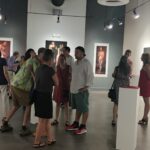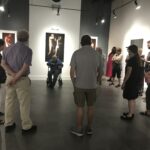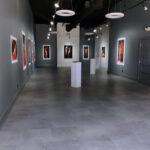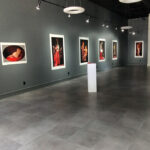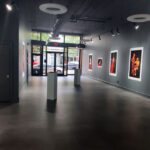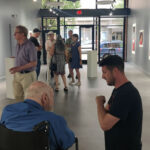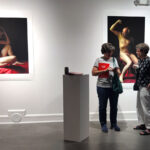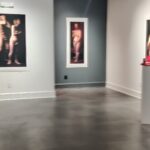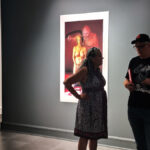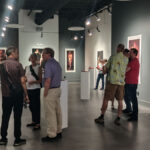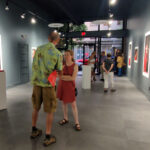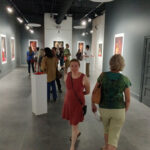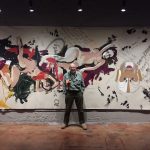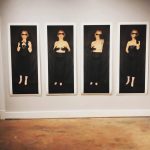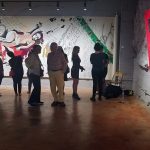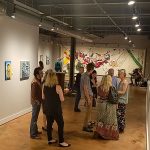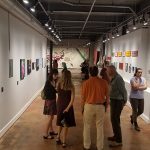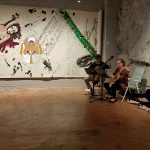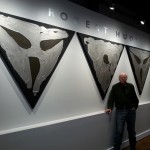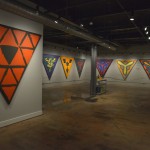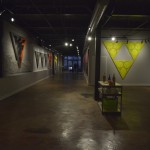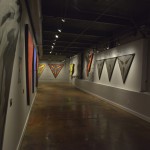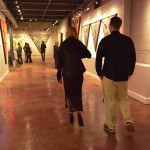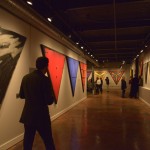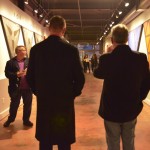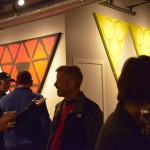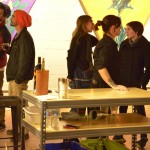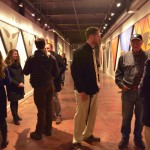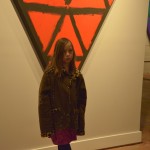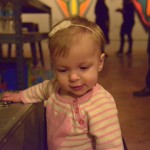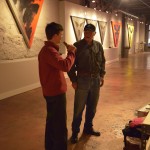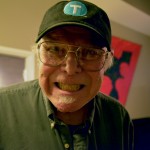Robert Huot “The Figure through the Ages”
July 7th through July 28th, 2023
Alexander/Heath Contemporary – “The Figure through the Ages” July 2023
Download copy of the Exhibition Catalog
Exhibition includes contributions by the Late Carol Kinne, Edward Hettig and Katy Martin.109 Campbell Ave SW / Roanoke, Virginia
Images from the opening reception, Friday, July 7th, 2023
Robert Huot “Opposites” w/ Isha Devine
October 5th through October 27th, 2018
Alexander/Heath Contemporary – “Opposites” October 2018
425 Campbell Ave SW / Roanoke, Virginia
Images from the opening reception, Friday, October 5th, 2018
Robert Huot “Equilateral Triangles”
May 6, through April 18, 2015
Alexander/Heath Contemporary
Roanoke, Virginia
Images from the opening reception, Friday, March 6th
“Equilateral Triangles”
Excerpt by Mary E. Murray / Curator of 20th –Century Art
Munson-Williams-Proctor Institute Museum of Art / Utica, NY
Bob Huot’s work from the 1990’s reflects the artist’s abiding fascination with the nature of painting. Initially these impressive canvases – like Bob – seem big, exuberant, aggressive, sometimes playful, overwhelming, and emotional. But, as one considers the artist and his paintings more carefully, however, it becomes clear that there is a strong dose of self-knowledge and intellectualism that governs these seemingly expressionist outpourings.
Huot had, of course, been one of several artists in the mid-to-late 1960s in whose hands the art object dematerialized.¹ In retrospect, he reflects with irony that the quest for dematerialization led him back to the object, but the traditional western painting format of the rectangle no longer satisfied him. Noting that shaped paintings have existed in western art since at least medieval altarpieces, Huot was aware of the fact that he did not want to choose a new format that was arbitrary or gratuitously novel. After reading R. Buckminster Fuller in the 1960s, Bob grew increasingly interested in the possibilities of the equilateral triangle, which he used more and more frequently in the mid-to-late 1970s in the Truss and Decoration series. He wanted to break from the rectangle’s window/mirror implications as well as (perhaps even more importantly) from its associations with industrialization – the representative unit of pre-fabricated materials and compartmentalization. The triangle, by contrast, enables Bob to project what he describes as “a whole other geometry” that signals the potential for a different universe. Huot admires the physical strength of the equilateral triangle because it creates something much greater in structural strength than a rectangle. For this founding member of the Art Workers’ Coalition, replacing assembly line symbolism for that of cooperative experience was undeniably potent.
Read this article in its entirety at roberthuot.com.
